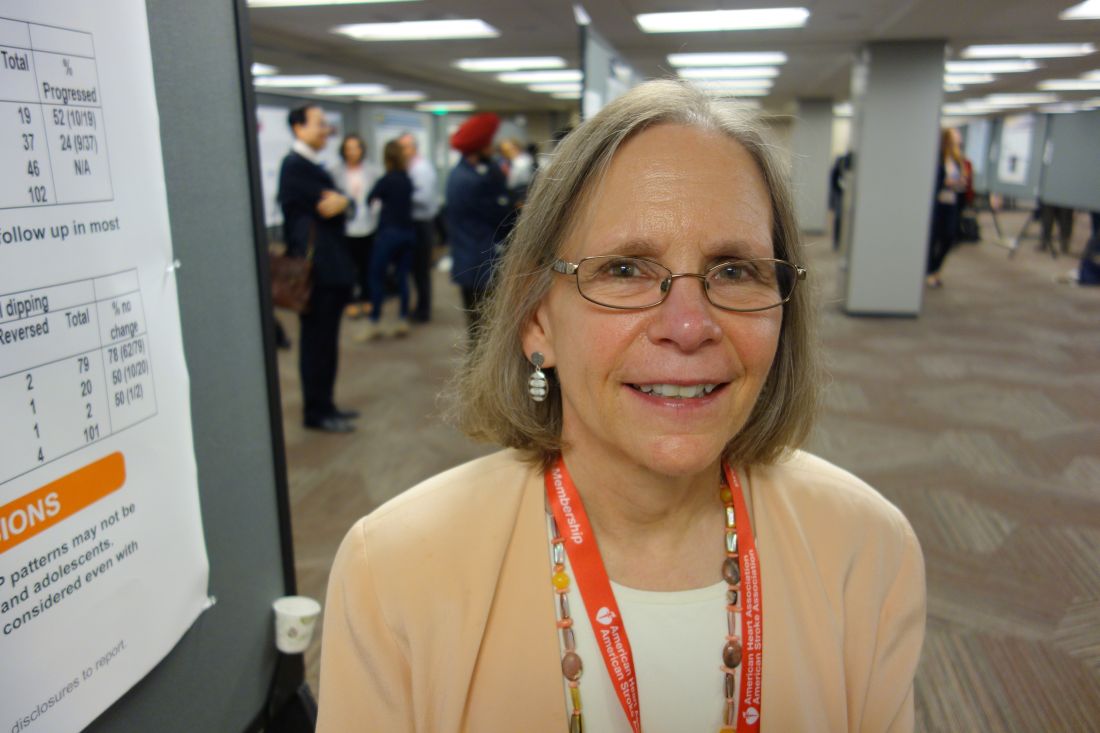SAN FRANCISCO – Pediatric ambulatory blood pressure monitoring (ABPM) is not stable over time and should be repeated before hypertension is diagnosed, according to an investigation of 102 children at Seattle Children’s Hospital.
Most of the children in the study had two 24-hour ABPM sessions at least 6 months apart (median, 1.5 years apart); a few children had three or four sessions. The children were aged 14.6 years, on average, at the first session, and had lifestyle counseling during the study period, but were not on blood pressure medications. Children were considered hypertensive if their average 24-hour readings were above the 95th percentile for sex and height until age 17 years, when they were considered hypertensive with readings of 140/85 mm Hg awake and 120/70 mm Hg asleep. Children with secondary causes of hypertension were excluded from the study.
Half of the children had a change in their ABPM classification from their first to their last session. Among 19 children with an initially normal reading, five progressed to prehypertension, and five to overt hypertension. Among 37 children initially classified as prehypertensive, 10 reverted to normal, and 9 progressed to hypertension. Among 46 children who were hypertensive on the first ABPM, 4 reverted to normal, and 17 improved to prehypertension. Among the 20 children with initially blunted nocturnal dipping, 9 normalized and 1 progressed to reverse dipping.
“These findings support greater use of repeat ABPM. It is possible that children with initially normal ABP may progress to hypertension or prehypertension, or that those with initial prehypertension or hypertension may be normal on repeat,” lead investigator Coral Hanevold, MD, said at the joint scientific sessions of the AHA Council on Hypertension, AHA Council on Kidney in Cardiovascular Disease, and American Society of Hypertension.
ABPM “is a great tool, but I think we have to realize it has some limitations,” she added. One limitation is that the patterns may not be that stable, and “before we go in and label people, it’s a good idea not to rely on just one session of monitoring,” added Dr. Hanevold, a clinical professor of pediatrics and director of the hypertension program at Seattle Children’s Hospital.
“Kids could be having a bad day the first time and get labeled hypertensive when maybe they’re not. Maybe they will improve,” she said.
The investigators plan to combine their data with a similar dataset from the Children’s Hospital of Pittsburgh. The goal is to be able to predict when white coat and prehypertension will progress to hypertension. Part of the work will involve putting a finer tooth on the broad ABPM categories of normal, prehypertensive, and hypertensive. It’s possible, for instance, that prehypertensive children who are initially closer to the threshold of hypertension will be more likely than other prehypertensive children to actually develop it.
“Our question is what’s going to happen long term. The telling thing is what’s the kid going to be like in 5 years, 10 years,” data that are not available, Dr. Hanevold said.
There was no external funding for the work, and the investigators had no disclosures.


